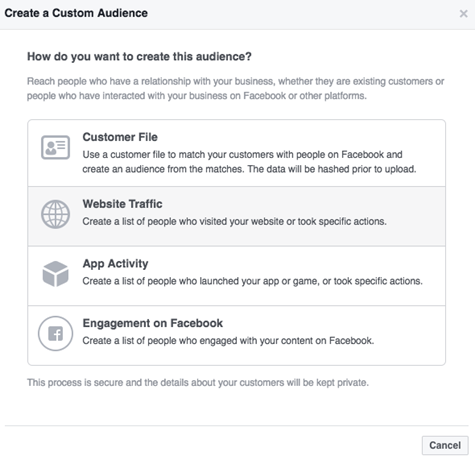Tips For Using Facebook Lookalike Audiences

Lookalike audiences have been a standard tool for digital marketers for quite some time, but they don’t always get top marks for performance. While having an audience created for you is great, it can be difficult to understand exactly what you should be doing to optimize them.
While there is a lot of automation in the creation of lookalikes, you as a marketer do have a fair amount of control in how they are created and tuned. It’s up to you to choose what audience they are based on and how similar they are to that audience.
Below we’ll cover some of the basics of creating a lookalike audience and then follow that up with some tips to go beyond initial set up.
Choosing The Right Source Audience For Your Goals
One of the first considerations when you want to use a lookalike audience is what your source audience is going to be. You can think of the source audience as the fuel that powers the lookalike audience by providing the data on which the lookalike audience can be built.
The key question is what do you want that lookalike audience to resemble?

You’ll have to decide who you most want to attract and for what goal. Are you trying to drive purchases? Traffic? Lead submissions? Video Views? Knowing what goal you are trying to drive will help you understand what source audience you need to use.
If you’re trying to drive purchases or lead submissions it may not make sense to base a lookalike on site traffic as you’re likely to capture lots of people who didn’t purchase or fill out a form. If you are trying to drive purchases of high value items, you’ll likely want an audience based on previous high value purchasers.
The key is understanding what you are trying to do, who you want to attract, and figuring out the best audience to use for that scenario.
Choosing How Similar The Lookalike Should Be
Once you’ve figured out the source audience question, the next question becomes how similar do you want the lookalike audience to be to the source. Values range from 1% (most similar) to 10% (least similar) and the 1% will end up being the smallest while the 10% will be the largest, though even at 1% you’re still going to see a very large amount of people.

The first decision most people make when building a lookalike is to go with the 1% audience. It’s the most similar to your source so it’s intuitive to go this route. It’s also a great way to test lookalikes, but it’s not the only strategy for using them.
For one, consider testing 1% vs. 2% vs. 3%. You might find that the 1% and 2% are comparable in conversion volume and CPA and in the future you could save a little time by just creating a 2% audience. This would give you a larger audience to target with little downside in terms of efficiency.
You might find that CPA creeps slowly up as you go from 1% to 3%. CPA could be great at the 1% and 2% level, but is right at your limit at 3%. You can then manage this by thinking of each percentage as a bucket. Money flows to the most efficient first, then the second, and then finally the third. Particularly if you have a large budget and max out what Facebook will spend at the lower percentages.
The goal is to find the balance of reaching the most people while maintaining proper cost controls. Testing is key in that regard.
Some Tips For The Road
While the above two recommendations are the core considerations when building a lookalike, there are a few other quality of life tips that can help you squeeze more performance out of your lookalikes.
First, consider testing ad copy that is based on the behavior of your source audience. That audience should be based on your overall goal, so it makes sense to tailor ad copy to drive the action you want to the audience that is most likely to do that action. Too often I see mismatches between the ad copy used in lookalike audiences and the goal of the campaign.
Second, give both manual and automatic bidding a chance. Lately, when using lookalikes, I’ve been testing Facebook’s automatic CPA bidding as a true automated targeting and bidding solution. The assumption being that if the audience targeting is set up correctly, Facebook should be able to find converters. This can often work well, but there are times when it falls short. Always be willing to test automatic versus manual bidding.
Lastly, be careful when layering extra targeting on top of a lookalike. The lookalike should already be similar to a source audience of your choosing, by adding more manual targeting on top you can needlessly restrict its size. If budget is a concern then layering on extra targeting can be a good solution, just start with the least restrictive targeting first until you see performance numbers.
Conclusion
Lookalike audiences can be a great way to put some of Facebook’s automation tools to use and can yield good performance. Make sure you use the above tips and keep testing to find what works for you and your situation.



